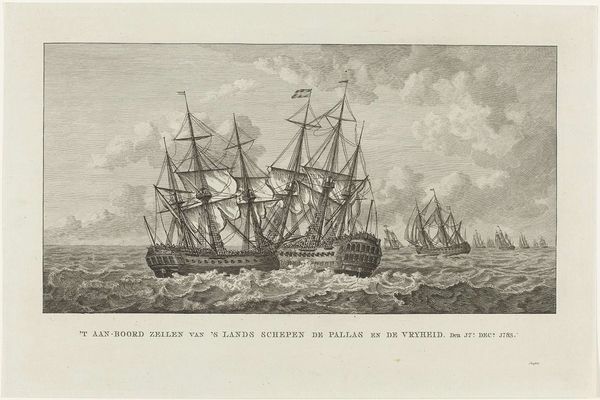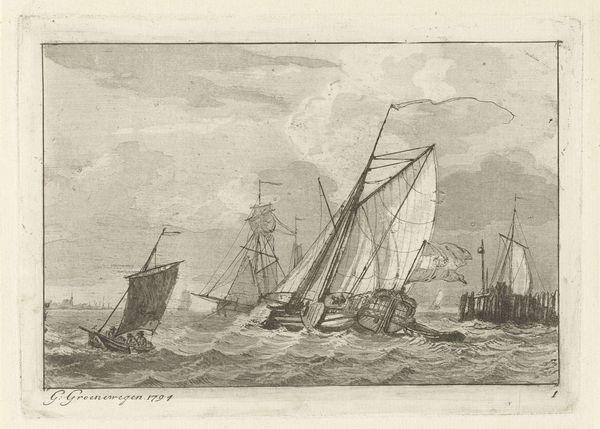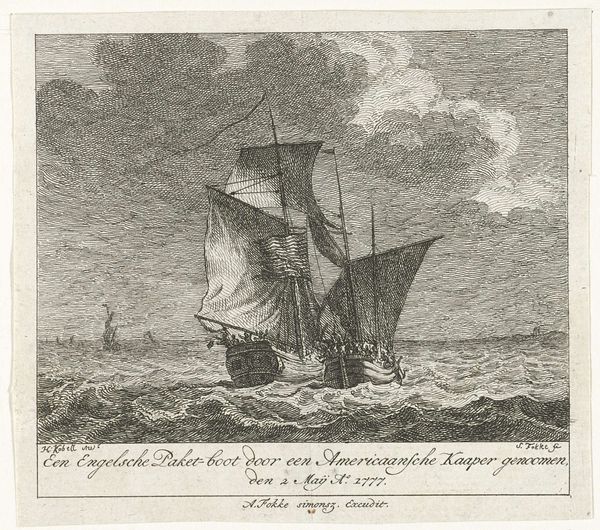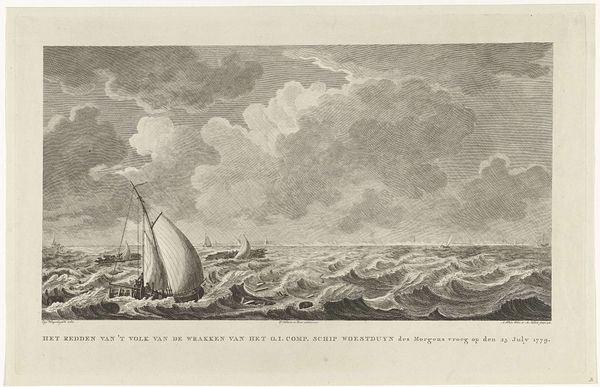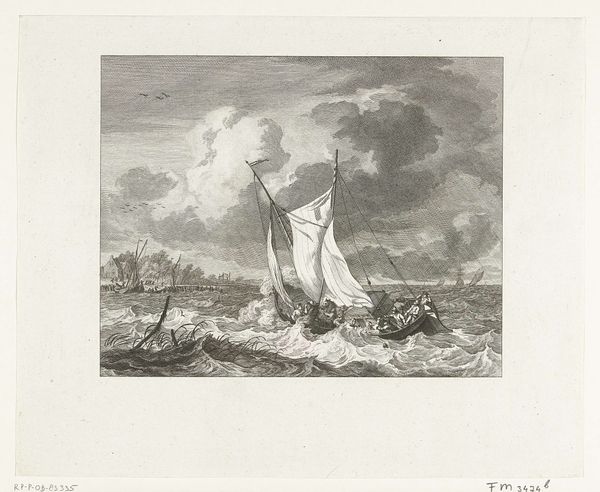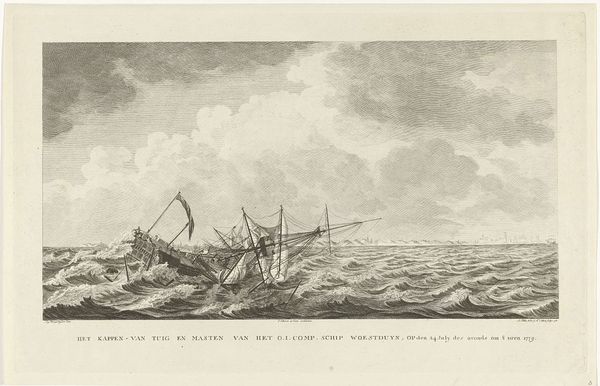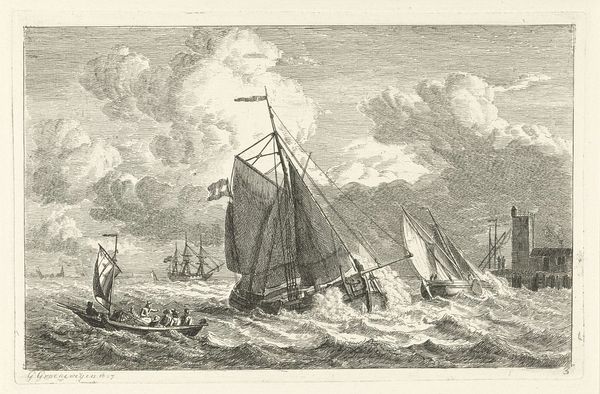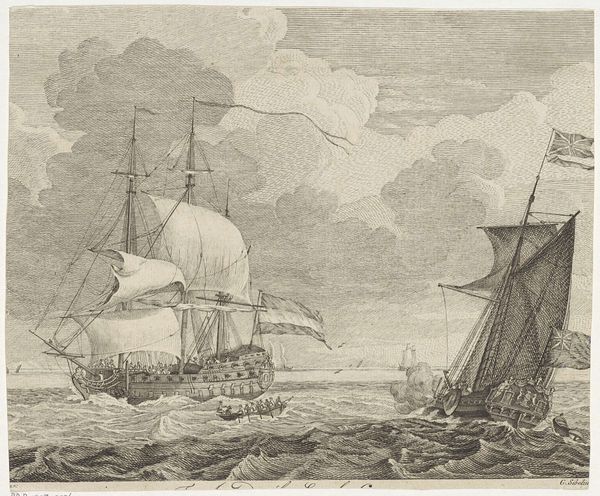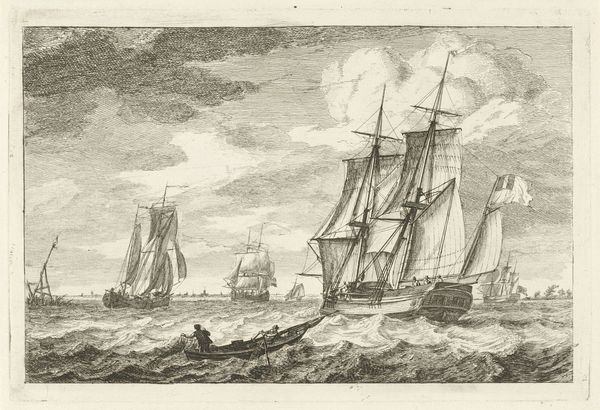
Dimensions: height 313 mm, width 497 mm
Copyright: Rijks Museum: Open Domain
Arend Fokke Willemsz created this print in 1779. The image, made with the labor-intensive process of engraving, depicts the ship Woestduin run aground. Engraving demands a high degree of skill. The artist uses a tool called a burin to physically cut lines into a metal plate, which is then inked and printed. The texture of the image is entirely dependent on these precise cuts, which capture the rough waves and billowing clouds. Each line represents a deliberate action, a mark of the engraver's hand. But of course, this image would have had a clear social purpose. Maritime trade was the engine of the Dutch Golden Age. Here, we see an example of the risks involved. Consider how the very act of engraving mirrors the labor, commerce, and even the dangers of the shipping industry itself. Each step in the production of the print reflects the wider context of 18th century Dutch maritime power. So, next time you look at a print, don't just see the image, but also the process, the labor, and the world it represents.
Comments
No comments
Be the first to comment and join the conversation on the ultimate creative platform.


